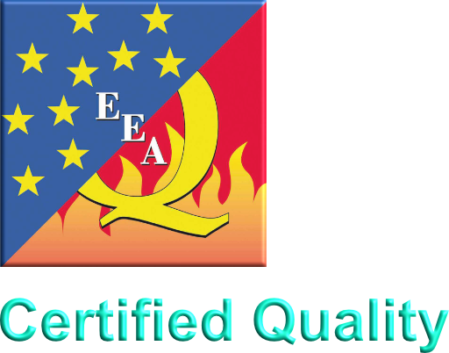
Enamel Quality
Vitreous Enamel is an extraordinary material. Extraordinary in its performance as well as in its appearance. Therefore, it is important that enamelled products are produced with the right skills and technology.
So, the European Enamel Association [EEA] made it its mission, to develop, maintain and audit voluntary "Quality Requirements“.
EEA Quality Requirements, how do they work?
It is important to have a good understanding of the intent and the scope of the EEA Quality Requirements. The EEA Quality Requirements are the necessary requirements for the enamel layer of enamelled products.
A simple example illustrates the implication of this statement: the EEA Quality Mark does not provide information on the washing performance of enamelled washers, it only refers to the Quality of the enamel layer in fulfilling EEA requirements like color stability, scratch resistance, adherence, corrosion resistance and resistance against detergents needed to clean laundry.
Therefore it is important to realise that the EEA sign only covers the quality of the enamel layer.
Exceptions to this rule
For many products a well-applied enamel coating is essential for the functionality of the product. A cooking pan with a base which is not flat, may be well enamelled, but will not perform well on an electrical heating plate. It is even possible that that the non-uniform heating of the base damages the enamel. Because surface flatness is an essential condition for a proper use of the pan and at the same time for the durability of the enamel layer, EEA specifies quality requirements for surface flatness of cookware.
Another example refers to heat exchanger panels. These panels are packed (installed?) in large industrial installation. During the installation no damage may occur, since the panels risk corrosion after installation. Therefore, requirements have been included for the enamelled plates after installation.
Enamel has to comply with many requirements. In the EEA Quality Requirements the following subjects are included:
- all procedures for testing, obtaining and retaining the EEA label.
- uniform and internationally standardised definitions of all terminology, used in the requirements test methods to be used to test the products. In principle these are test methods described in international standards, such as ISO- and CEN standards. In cases where no ISO or CEN standards exist, well-known national standards or EEA specifications are referred to the quality of the basic materials, such as steel, cast iron, enamel frit and ways to test the properties of these materials.
- the characteristic properties of (good) enamel layer, such as corrosion resistance, gloss, hardness, heat - and thermal shock resistance, but also cleaning- and antibacterial properties and the impact of material and process on the environment.
- The product categories for which a Quality Mark can be obtained and the specific requirements for these categories.
This is an extensive list, which can be updated and extended regularly. Each party wanting an addition or adjustment of the requirements can apply to the EEA. The Executive Committee of EEA decides on the adjustments and additions of the quality requirements. Every 3 years the requirements will be updated to the “state of the art”. A request for adjustment or extension of the requirements is certainly not restricted to the enamel producers wanting to obtain the Quality Mark for their products. A customer, regularly purchasing enamelled ware and desiring standardised requirements can also make a request.